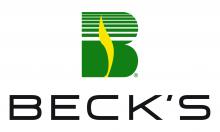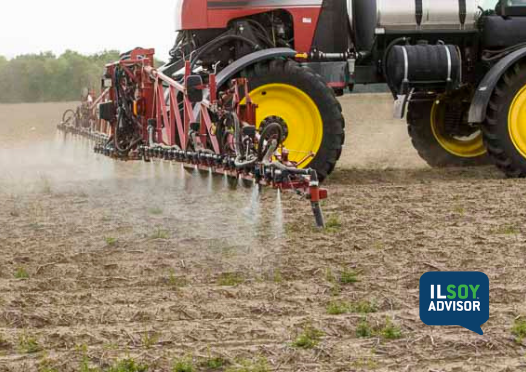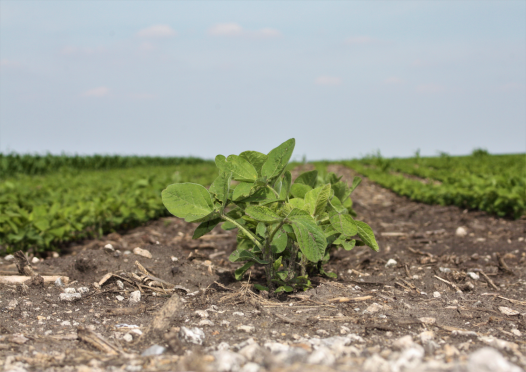ILSOYADVISOR POST
2020 Vision for Weed Control

Weed control on soybeans will again be at the forefront going into the 2020 season. With record prevent plant acres in some areas of Illinois, 2020 could be a defining year as weed seed banks have increased on many of these acres. Although we have the potential to see increased weed pressure and different species of weeds compared to previous years, the recipe for maintaining clean fields will not change.
In the past, effective weed control could be achieved by rotating chemistries year in and year out with differing sites of action (SOA). With the evolution of weed species, specifically waterhemp, palmer amaranth, giant ragweed, and marestail, a single SOA rotation will not achieve clean fields anymore. Attaining clean soybean fields will have to start with a well-thought plan based on pre-emergent residuals and the options available for post-emergent applications based on the soybean technology planted.
Power in the PRE™
One of the systems that can help build a robust chemical plan is the Roundup Ready Xtend® Crop System. As mentioned before, starting the season with a strong burndown and/or a pre-emerge residual pass is the foundation for any sound weed management system. Soybeans that contain the Roundup Ready 2 Xtend trait provide farmers with another option for weed control by potentially allowing a single pass pre-emergent application that can eliminate already emerged weeds and lay down a residual. The dicamba products Engenia®, FeXapan®, or Xtendimax® can be applied pre-emerge with approved tank-mix residuals with no concern for crop injury from the dicamba molecule. It is recommended that one reviews the approved tank-mix list for the appropriate dicamba product. A residual herbicide should be included in this pass.
Importance of Residuals
Selecting a residual herbicide can be a tedious task with multiple active ingredients, differing trade names across similar products, and a variety of differences in targeted weed species. My recommendation for pre-emerge residual herbicides always begins with determining the target weed species. Also, with weed species evolving and obtaining resistance to multiple sites of action (waterhemp has known resistance to five SOAs), no single chemistry should be selected. The best pre-emerge residual products will contain a mix of two or more SOAs. These include:
- Group 2: FirstRate®, Pursuit®, Classic™, etc.
- Group 14: Cadet®, Spartan®, Valor® EZ or Valor SX®, etc.
- Group 15: Zidua®, Dual II Magnum®, etc.
A label-approved mix of the residual pre-emerge herbicides paired with a mix of glysophate and an approved dicamba product will set the stage for clean fields in Roundup Ready 2 Xtend soybeans. The same residual herbicides can be used with LibertyLink® GT27™ and Enlist E3™ soybeans. However, dicamba would not be used unless planting intervals listed on the label were followed.
Developing a Post-Application Plan
Post-emergence herbicide application plans should also be thought out carefully at the same time as pre-emergence plans. Many herbicides carry a maximum yearly application rate that must be observed. We also want to make sure that a post-emergent-applied herbicide utilizes different SOAs to combat further weed resistance. Recommendations for post-emergence applications follow many of the same principles as the pre-emerge. Select multiple SOAs, have a product that can kill emerged weeds and lay down more residual for season-long control. The old saying of “the weeds are hardly big enough to spray” should be avoided at all costs! All herbicide labels define height restrictions for best control and should always be observed. For updated 2020 Illinois dicamba restriction and rules please follow this link.
The fight to maintain clean fields will not be a one-size-fits-all approach. It is pertinent that we understand the weed population in our fields and, if they are resistant to specific herbicides, to lay out a plan to combat weed pressure and further resistance. Utilizing multiple SOAs and implementing technology such as Roundup Ready 2 Xtend or Enlist E3 soybeans may be a way to control weeds in 2020.
To help navigate the herbicide decision making process, Beck’s Recommended Soybean Herbicide Program Guide is a great resource. You can find this comprehensive collection of recommended herbicide programs and options for soybeans here: https://www.beckshybrids.com/Herbicide-Brochure
Roundup Ready 2 Xtend® is a registered trademark of Bayer Group.
FirstRate® is a registered trademark and Classic™ and Enlist E3™ are trademarks of Dow AgroSciences, DuPont or Pioneer and their affiliated companies or respective owners.
LibertyLink®, Pursuit®, and Zidua® are registered trademarks and GT27™ is a trademark of BASF.
Cadet® and Spartan® are registered trademarks of FMC Corporation.
Valor® EZ iand Valor® SX are registered trademarks of Valent U.S.A. Corporation.
Dual II Magnum® is a registered trademark of Syngenta.





Comments
Add new comment